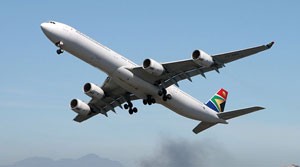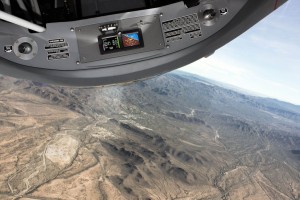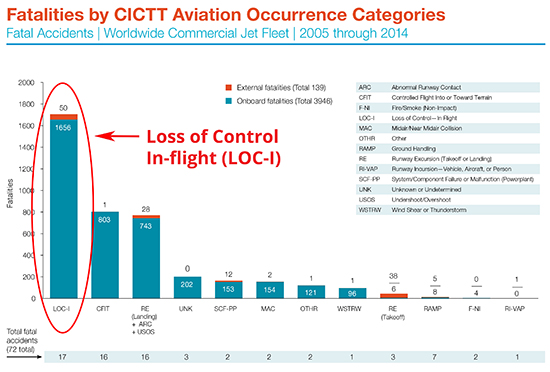 Randall Brooks, APS Vice President for Training, recently had the opportunity to speak with AIN reporter Matt Thurber, who wrote an insightful article on Upset Training in the Age of Fly by Wire. This is a critical topic for the aviation industry and one we would like to explore in further detail.
Randall Brooks, APS Vice President for Training, recently had the opportunity to speak with AIN reporter Matt Thurber, who wrote an insightful article on Upset Training in the Age of Fly by Wire. This is a critical topic for the aviation industry and one we would like to explore in further detail.
Why Upset Recovery Skills Are Essential Despite Important Advances to FBW Aircraft
Recent incidents and accidents in the aviation industry worldwide have brought into focus the fact that regardless of automation, protection logic, and systems sophistication, sound upset recovery strategies apply to all types of aircraft. Despite tiers of automated protection preventing the exceedance of critical flight parameters in advanced jet aircraft, flight crews must clearly understand that system degradations and failures can occur leading to a reduction or complete loss of these protections. In this state, these advanced aircraft have little more capability or protection than any other aircraft with basic flight controls, where manual control methods are not only applicable but vital for recovery.
Current FBW Philosophy
The Airbus FBW philosophy, has evolved since the inception of first generation FBW systems. Their initial philosophy, reflected in the Airbus Flight Crew Training Manual stated “The effectiveness of fly-by-wire architecture, and the existence of control laws, eliminates the need for upset recovery maneuvers to be trained on protected Airbus aircraft.” Their position now includes guidance for flight crews and training organizations on how to conduct Upset Prevention and Recovery Training (UPRT) in a Flight Simulation Training Device (FSTD). David Owens, Airbus senior director of training policy says that in light of recent accidents Airbus is “focusing on recognition.”
Although simulator UPRT is a valid part of a comprehensive UPRT program, Airbus recognizes that it is preferable for pilots to learn UPRT skills in initial licensing training in an actual airplane before reaching the stage of piloting a commercial aircraft. Nonetheless, the simulator portion of training in UPRT is an excellent tool to teach recognition of upset events, which is the root cause of many of the more recent fatal loss of control in-flight events.
 Additional Benefits and Nuances of UPRT
Additional Benefits and Nuances of UPRT
Besides increased understanding and proficiency in maneuvering the aircraft out of an impending or existing upset, other core manual handling skills are gained from a comprehensive UPRT course. Typical on-aircraft training training courses may involve four flights – about three and a half to four hours of instruction in the airplane. During that time pilots will gain more knowledge and skill than during any other equal time of flight instruction in their careers. It is somewhat expensive training, and not required yet, but it is incredibly valuable in terms of the exposure and strategy applications to mitigate the industry’s top cause of fatalities.
Fly by Wire aircraft have extensive redundancies in systems, and UPRT provides the same redundancy in the training of the flight crew. For example, normal licensing training requires exposure to flight envelopes up to 30 degrees of pitch and 60 degrees of bank, within which the flight controls generally do what the pilot expects and where sensory cues are intuitive. However, the further one ventures outside of that envelope, the more these normal recovery skills become counterproductive, and can actually do the opposite of what the pilot may expect. Moreover, visual and other sensory cues become more subject to misinterpretation outside of the normal envelope. In other words, as an aircraft upset condition increases in severity, appropriate recovery actions become more counterintuitive and must be learned in the UPRT environment in actual flight.
A Powerful and Growing Consensus Based on Real World Statistics and Research
 The global aviation industry is becoming more aware of the loss of control inflight threat, and many governmental regulatory agencies are beginning to requiring UPRT. Instructors of compliant UPRT programs need to have an extensive background or instruction in upset recovery themselves in order to be able to effectively teach UPRT.
The global aviation industry is becoming more aware of the loss of control inflight threat, and many governmental regulatory agencies are beginning to requiring UPRT. Instructors of compliant UPRT programs need to have an extensive background or instruction in upset recovery themselves in order to be able to effectively teach UPRT.
Strides are being made throughout the global industry to make Full Flight Simulators (FFS) increasingly able to properly mimic actual conditions in critical flight parameters, where previous limits in software programming and algorithms prevented this capability. These updated and more robust FFS devices are critical to training to operate commercial airline aircraft. However, an increasing consensus from ICAO, EASA, IATA and others calls for the integrated use of both flight simulation and actual aircraft to capture the best benefits that each training platform has to offer.
We encourage you to also read Matt Thurber’s article in AIN Magazine on Upset Training in the Age of Fly by Wire and join the conversation around this important safety concern and the continuing efforts to improve aviation safety.




Comments: